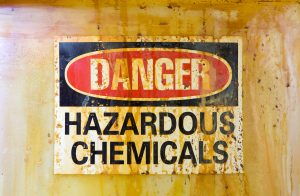 A key component of a company’s risk management function is to keep a close eye on new and developing sources of liability and to put in place appropriate insurance to respond in the event those liabilities ripen. In recent years, there has been a significant increase in legal and regulatory attention on per- and polyfluoroalkyl substances, more commonly known as “PFAS” or “forever chemicals.” PFAS are used in countless applications, and many companies across the country bear potential liability, from chemical companies to manufacturers to retailers to corporate end users. PFAS-related enforcement is focused on remedying impacts to both the environment and human health. Importantly, a company’s liability for PFAS-related contamination or bodily injury may be covered under historic general liability policies and/or modern-day pollution liability policies. As regulation and litigation relating to these ubiquitous substances continues to surge, corporate policyholders with potential exposure should be proactive to examine their insurance portfolios and position themselves for potential insurance coverage in the event they become a PFAS liability target.
A key component of a company’s risk management function is to keep a close eye on new and developing sources of liability and to put in place appropriate insurance to respond in the event those liabilities ripen. In recent years, there has been a significant increase in legal and regulatory attention on per- and polyfluoroalkyl substances, more commonly known as “PFAS” or “forever chemicals.” PFAS are used in countless applications, and many companies across the country bear potential liability, from chemical companies to manufacturers to retailers to corporate end users. PFAS-related enforcement is focused on remedying impacts to both the environment and human health. Importantly, a company’s liability for PFAS-related contamination or bodily injury may be covered under historic general liability policies and/or modern-day pollution liability policies. As regulation and litigation relating to these ubiquitous substances continues to surge, corporate policyholders with potential exposure should be proactive to examine their insurance portfolios and position themselves for potential insurance coverage in the event they become a PFAS liability target.
Articles Posted in Bodily Injury
Changes Lie Ahead for Companies in the #METOO Era – A Good Insurance Program Should Be a Part of those Changes
America is facing a reckoning. Many brave individuals have stepped forward over the last several months to speak truth about sexual harassment and assault in workplaces, in entire industries, and even in Congress. For a very long time, companies dealt with sexual assault and harassment allegations quietly and in backrooms, and these allegations often were not taken seriously. However, thanks to the turning tide, more companies are reexamining their internal policies, encouraging change in corporate culture, and addressing sexual assault, harassment, and discrimination claims more directly. As part of this effort, companies should also look at their corporate insurance programs to confirm insurance is in place should any such claim arise.
even in Congress. For a very long time, companies dealt with sexual assault and harassment allegations quietly and in backrooms, and these allegations often were not taken seriously. However, thanks to the turning tide, more companies are reexamining their internal policies, encouraging change in corporate culture, and addressing sexual assault, harassment, and discrimination claims more directly. As part of this effort, companies should also look at their corporate insurance programs to confirm insurance is in place should any such claim arise.
Only about 41 percent of companies with more than 1,000 workers report having some kind of insurance plan to cover sexual harassment and discrimination, and only about 33 percent of companies with at least 500 employees carry any insurance coverage for claims resulting from sexual harassment or assault. The numbers are even starker for startup companies, with only three percent of companies with fewer than 50 employees carrying such coverage. Therefore, while more and more companies are instituting anti-sexual harassment and anti-discrimination policies, many companies remain ill-prepared to handle the inevitable challenges that await individuals, executives, and companies alike, as a result of this watershed moment in American culture.
New York Court Reads Additional Insured Provision Broadly in Favor of Owner and Contractor
 In a previous blog post, we addressed blanket additional insured endorsements, and the circumstances under which Company A could become an additional insured under Company B’s policy, even where Company B failed to add Company A to the policy. In that same vein, a New York trial court granted additional insured status to entities that did not even contract with the named insured, but were referenced in the named insured’s subcontract. Owners and General Contractors should take note of this decision, as it creates the potential for insured status even where there is a lack of contractual privity.
In a previous blog post, we addressed blanket additional insured endorsements, and the circumstances under which Company A could become an additional insured under Company B’s policy, even where Company B failed to add Company A to the policy. In that same vein, a New York trial court granted additional insured status to entities that did not even contract with the named insured, but were referenced in the named insured’s subcontract. Owners and General Contractors should take note of this decision, as it creates the potential for insured status even where there is a lack of contractual privity.
Startups Beware: California Expands Workers’ Comp to Include Corporate Officers, Directors and Working Partners
The startup guys in the hit television series Silicon Valley might be surprised to learn that the California legislature has expanded the scope of mandatory Workers’ Comp coverage to include their corporate officers, directors and working partners. The new law, effective January 1, 2017, sweeps in a broad range of individuals, unless they file a written opt-out. These changes to the California Labor Code are creating confusion for some businesses regarding which employees must now be included on workers’ comp insurance coverage. The consequences of noncompliance can be severe, and businesses would be well-advised to ensure that they have secured the necessary additional coverage or obtained the necessary opt-outs from affected officers, directors, and working partners.
range of individuals, unless they file a written opt-out. These changes to the California Labor Code are creating confusion for some businesses regarding which employees must now be included on workers’ comp insurance coverage. The consequences of noncompliance can be severe, and businesses would be well-advised to ensure that they have secured the necessary additional coverage or obtained the necessary opt-outs from affected officers, directors, and working partners.
New York Court of Appeals Decision Undermines Additional Insured Coverage
We put lights on the front of trains so we can see them approaching in a tunnel. And we buy insurance for the accidents that occur despite such precautions. General contractors try to manage their project risks by taking precautions to avoid accidents, but they also require subcontractors to name them as “additional insureds” on their general liability or project-specific insurance should an accident happen. Suppose you’ve done that. An accident follows: Your subcontractor injures a person on the project site as a result of your own workers’ failure to warn. You’re covered, right? Better slow down.

The Time a Government Subcontractor Fell Off a Ladder … Right after Its Defense Base Act Insurance Lapsed
Imagine you are a prime contractor to a Department of the United States of America supplying logistical support for the war on terrorism in Afghanistan. As the prime, you are kicking on all cylinders, including purchasing comprehensive Employer’s Liability, Workers’ Compensation and Defense Base Act (DBA) insurance to cover your own employees against a worker injury claim abroad.
Then the phone rings.
 A 30-year-old American worker hired by your subcontractor working on base encountered a swarm of bees while painting; he fell and was crippled. The sub isn’t paying his medical expenses and is apparently nowhere to be found. The injured employee’s bulldog lawyer is on the line threatening to sue your company directly for his client’s devastating injuries.
A 30-year-old American worker hired by your subcontractor working on base encountered a swarm of bees while painting; he fell and was crippled. The sub isn’t paying his medical expenses and is apparently nowhere to be found. The injured employee’s bulldog lawyer is on the line threatening to sue your company directly for his client’s devastating injuries.
How can this be?
DBA coverage is workers’ compensation insurance that employers may turn to in the event that an employee is injured while working on a contract financed by the U.S. Government and performed outside the United States. Section 5(a) of the Act provides that “a contractor shall be deemed the employer of a subcontractor’s employees if the subcontractor fails to secure the payment of compensation.”
Buyer Beware: Some Policies Do Not Cover What You Think They Do
Barely removed from the Super Bowl, football fans have begun their long hibernation in anticipation of next season. But the Patriots’ incredible comeback reminds me that it coincided with the tenth anniversary of one of the great NFL coach rants, courtesy of the late Dennis Green of the Arizona Cardinals. Coach Green was interviewed after his team blew a 20-0 halftime lead to my beloved Chicago Bears. Using some other choice words, Green said about the comeback kids: “the Bears are who we thought they were!”

So what does this have to do with insurance? Well, unlike Coach Green, not all policyholders can say that their insurance policies are exactly what they thought they were. A recent Fifth Circuit case, Richard v. Dolphin Drilling Ltd., is such a case. There, the policy exclusions were so broadly construed that 99 percent of the insured’s operations were excluded from coverage.
Robot Take the Wheel: Insurance Implications of Autonomous Vehicles
The era of the self-driving car has arrived, with the shiny promise of fewer auto collisions—and the inevitable potholes of a transformative technology. Despite the significant concerns raised by a recent accident involving a driver’s reliance on  a partially autonomous automatic braking and steering system on the Tesla Model S—one of 70,000 such vehicles now on the roads—the auto industry is roaring ahead with autonomous vehicles (AVs). Google is testing its driverless cars extensively on U.S. roads; General Motors has teamed up with car-sharing company Lyft to develop a driverless taxi service; and most major automakers will be releasing fully or partially autonomous vehicles in the next five years.
a partially autonomous automatic braking and steering system on the Tesla Model S—one of 70,000 such vehicles now on the roads—the auto industry is roaring ahead with autonomous vehicles (AVs). Google is testing its driverless cars extensively on U.S. roads; General Motors has teamed up with car-sharing company Lyft to develop a driverless taxi service; and most major automakers will be releasing fully or partially autonomous vehicles in the next five years.
Is That Product Liability Claim Covered?
Matthew D. Stockwell recently published an article in the June 2016 edition of Claims magazine, a PropertyCasualty360 publication, titled “Is That Product Liability Claim Covered?” In the article, he discusses Commercial General Liability insurance policies and whether or not these policies cover claims of bodily injury and property damage.
Insurance Coverage for Nuisance Claims in the Oil Patch
In Texas and other states, the mineral owner can freely use the surface estate to the extent reasonably necessary for the exploration, development and production of oil and gas. That includes activities such as building roads, drilling wells and transporting equipment and personnel. But frustrated property owners are incr easingly bringing nuisance claims based on bright lights, loud noises, traffic, dust, odors, wastewater and other effects of these activities. A question facing the oil and gas industry is whether the costs of such nuisance claims are covered by insurance.
easingly bringing nuisance claims based on bright lights, loud noises, traffic, dust, odors, wastewater and other effects of these activities. A question facing the oil and gas industry is whether the costs of such nuisance claims are covered by insurance.
 Policyholder Pulse
Policyholder Pulse


